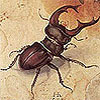|
усднфмхйх
тнрнцпютш
ймхцх Х юркюяш
яхярелю фхбнцн
лхпю Б
хккчярпюжхъу
хгдюрекэярбн
люярепяйюъ
онкегмше
яяшкйх
|
Names:
Filippo Napoletano (preferred)
Felippo Napoletano
Felippo Napolitano
Felippo dell'Angeli
Filippo dell'Angeli
Filippo degl'Angeli
Filippo degl'Angioli
Filippo degli Angeli
Filippo Angeli
Filippo d'Angeli
Filippo de gli Angioli
Filipo de Ligorno
Filippo di Liagno
Filippo di Liviano
Filippo Napolitano
Filippo Napulitano
Filippo Leni
Teodoro Filippo de Liagno
Angeli, Filippo d'
Angeli, Filippo de Liano d'
Napoletano, Filippo
Liagno, Filippo di
Liagno, Teodoro Filippo de
Phillipe Napolitano
Philippe Napolitain
Philippo Neapolitano
Ph. Napolitain
Il Napolitano
Il Napoletano
Filippo D' Angeli
Angeli, Filippo D'
Angeli, Filippo Napoletano
тХКХООН мЮОНКЕРЮМН
(1587-1629)
Italy - хРЮКХЪ
оЕПЕИРХ Б юПР-ЦЮКЕПЕЧ Filippo Napoletano
н УСДНФМХЙЕ
|
Filippo Napoletano (Teodoro
Filippo de Liagno) (Naples c. 1587 √ Rome November 1629) was an Italian artist,
with a peculiar output, mainly landscape and genre scenes and also drawings or
etchings of diverse, often particular, items such as exotic soldiers, skeletons
of animals, or cityscapes.
He began his career in Naples (1600-1613) and moved to Rome (1614-1617), where
he appears to have encountered and felt influenced by the successful Flemish
landscape painters such as Paul Bril, Goffredo Wals, and Adam Elsheimer.
In 1617 Cosimo II de▓ Medici summoned him to Florence, where he worked closely
with Jacques Callot. From notebooks, Filippo is known to have made hundreds of
sketches of Tuscan landscapes and towns.
Starting in 1620 he reproduced in etchings part of his collection of animal
skeletons owned by Johann Faber, a Bavarian physician-naturalist residing in
Rome and a member of the scientific Accademia dei Lincei. In 1622, Napoletano
published twelve etchings of caprices (capprici) and military uniforms (which he
signed as signed Teodor Filippo de Liagno).
He is described by Baglione as possessing a collection, a "Wunderkammer of
bellisime bizzerrie" (beautiful bizarre objects), including among the
objects exotic weaponry; fossilized plants; tiger, lion, and turtle skulls;
oriental porcelain and sculpted crockery; a vest made of human skin; a harness
for dragging whales on ice; a three-legged flea, Persian uniforms, and
antiquities such as Roman coins, bronze lamps, and a few statuettes. After
Napoletano▓s death, bidding for such material was made by collectors such as
Cardinal Ippolito Aldobrandini (future Clement VIII) and Cassiano dal Pozzo. |
яЯШКЙХ -
Links
http://en.wikipedia.org/wiki/Filippo_Napoletano
List of Artist Names
http://www.getty.edu/vow/ULANFullDisplay?find=Napoletano&role=&nation=&prev_page=1&subjectid=500010734
|
|
